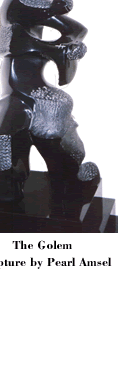




In the 16th century, during the dawn of mechanical precision and the "clockwork revolution," the Maharal, a brilliant Rabbi, envisioned a time in the future when alchemists would create artificial humans. The myth of the Golem spread. And while the "technology" (of molding clay and uttering an incantation) was an oversimplification, it led to deep examination of the impact of science and engineering on the human condition. Do we have a right to take on G-d's own work of creation?
In the year 2000, Brandeis computer scientists published a NATURE article in the young field of Artificial Life called "Genetically Organized Lifelike Electro-Mechanics" (GOLEM). It was the first Robot that creatively designed and automatically manufactured other robots, and by becoming front page news, it started a broad discussion on the ethics of self-reproducing technologies, as well as on the nature of machine creativity.
Brandeis University is the natural place for a unique Institute with a multi-decade mission to study the modern Golem by bringing together Artificial Life, Robotics, and Synthetic Biology research and coupling it closely to a parallel program in ethical, legal, and social implications (ELSI), including the Jewish literary tradition on the Golem.
Thus, as we create ever more complex bio-mimetic machines, we also prepare the human mind for the inevitable collision of natural and artificial life foreseen by the Maharal.
With enough funding, BIG will assemble and hire the core faculty for a long-term scientific R&D effort in synthesizing life as a mechanical, chemical, and computational process, and stage an ongoing series of scholarly meetings on the ethical, social and legal issues which arise when flesh meets metal and spirit is etched into silicon.